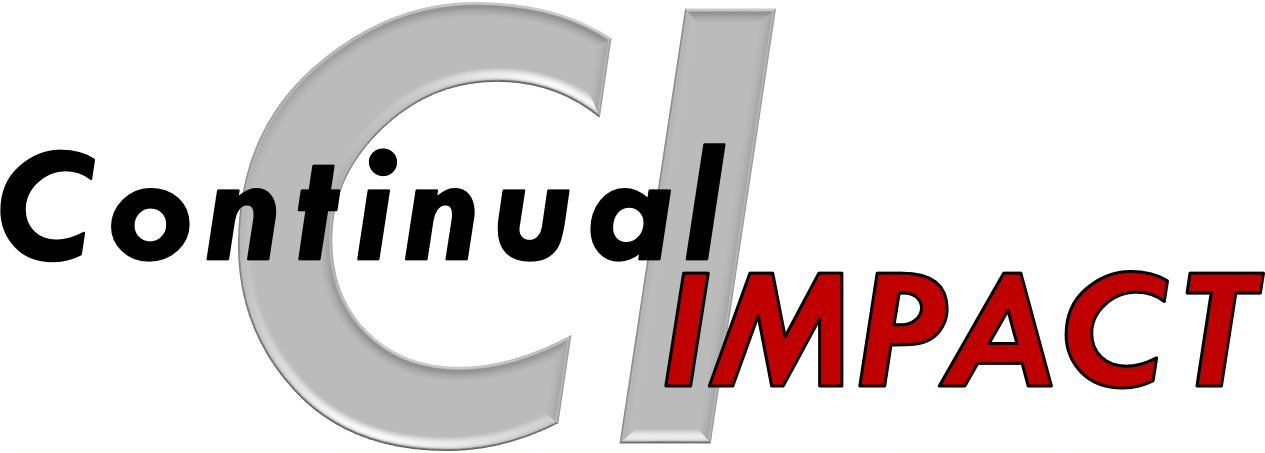Writing a Great Goal
The Importance of Setting Goals and How They Can Be Improved…
Why Care About Goals?
Studies of truly great improving organizations, ones that have a culture of improvement, typically have several characteristics. One of these characteristics is Focus. By focus, we mean that they have an understanding of their mission and do a good job of identifying strategies in the priority areas of the organization to improve. They are clear at the leadership, management, and individual contributor level as to the actions required to implement their strategies and each individual in the organization understands their role in implementing the actions very real and daily basis.
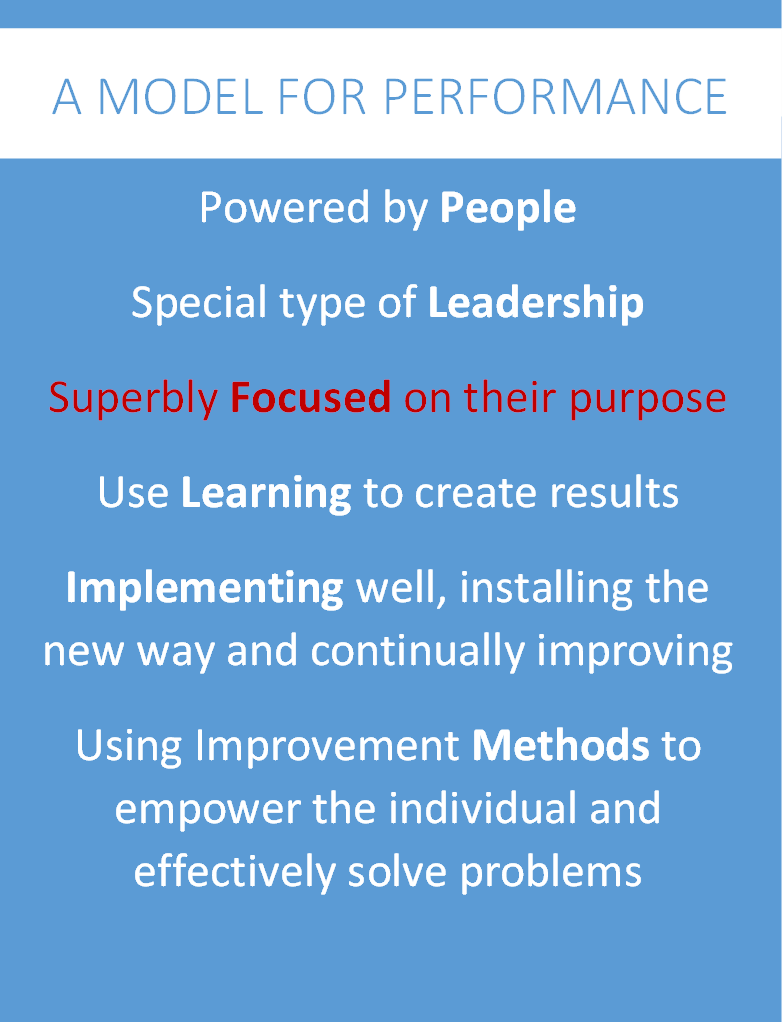
Take, for example, a Franklin Covey and Harris Interactive poll of over 10,000 U.S. workers which found only:
- 37% say they understand the reason for their organization’s strategic direction
- 15% of workers could actually identify their organization’s top three goals
- 22% of workers are enthusiastic about the goals they set with their work teams
- 48% of workers say the goals of their work team are translated into their individual work goals 38% of workers say their work team planning results in clear assignments for individuals
- 38% of workers say that their work team systems and processes are aligned to help the team achieve its goals
How can an organization achieve a culture of improvement and utilize its most precious resource, it’s people, without an understanding of the organizational direction and actions needed in which to accomplish the culture?
This is Where Goal Setting is Critically Important.
Goals can effectively help focus the organization, a project or task. They can be used in establishing the mission of an organization, chartering a team, making decisions, conducting a meeting, problem-solving, or in setting personal objectives. Effective goals have a significant positive impact on the effectiveness and efficiency of any team, project, or task.
Good goal setting enables success by eliminating confusion and wandering. They enable team members’ participation. Bad goals can point in the wrong direction and ensure failure.
People and teams with goals can accomplish almost anything given time and resources…
What is A Goal Statement?
A good goal statement is a basic starting point for a team or individual to plan their work and identify whether it is successful or not- they are fundamental for success. A goal statement, properly detailed and documented defines completely the desired result. It describes the purpose, outcome or activity that must be accomplished. Organizations havee used a form of goal statement known as an “Aim statement”, as a starting point for its improvement cycle (plan, do, study, act) and improvement projects for a number of years. Different formats exist with various prompting questions and comprehensiveness of content. They have generally prompted the users to investigate 1) what is it we seek to accomplish?, 2) Who is the target team/population?, 3) How will we know that an improvement has been made (or what is the specific measure we seek to achieve)? and 4) What changes can we make that will result in improvement?
What are the Components of a Complete Goal Statement?
Consider that each useful goal statement should include the following six components:
- The result to be achieved; “TO”
- Who is benefiting from the goal; “FOR”
- The approach, or process to be used in order to produce a result; “BY”
- A list of benefits to be produced for each benefiting party; “SO THAT”
- Constraints that are placed upon the project while achieving the goal; “CONDITIONS”
- The success criteria or measures that define success; “STANDARDS”
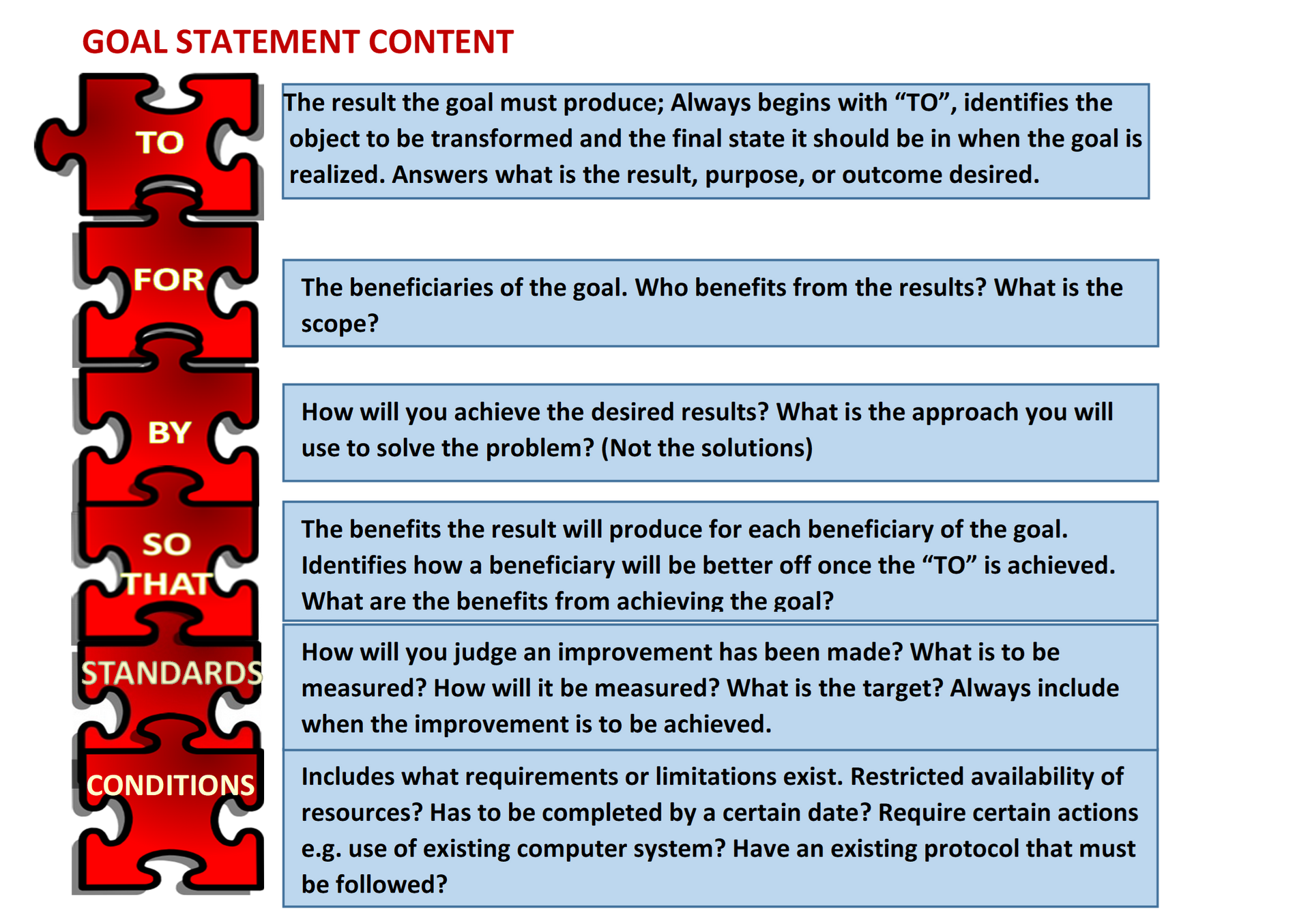
How about an example?
Below is a potential goal statement for project to improve food inspection. Does it address the components of a good goal statement and explain the opportunity the team is addressing? Any questions, concerns, or suggestions for the team’s goal?
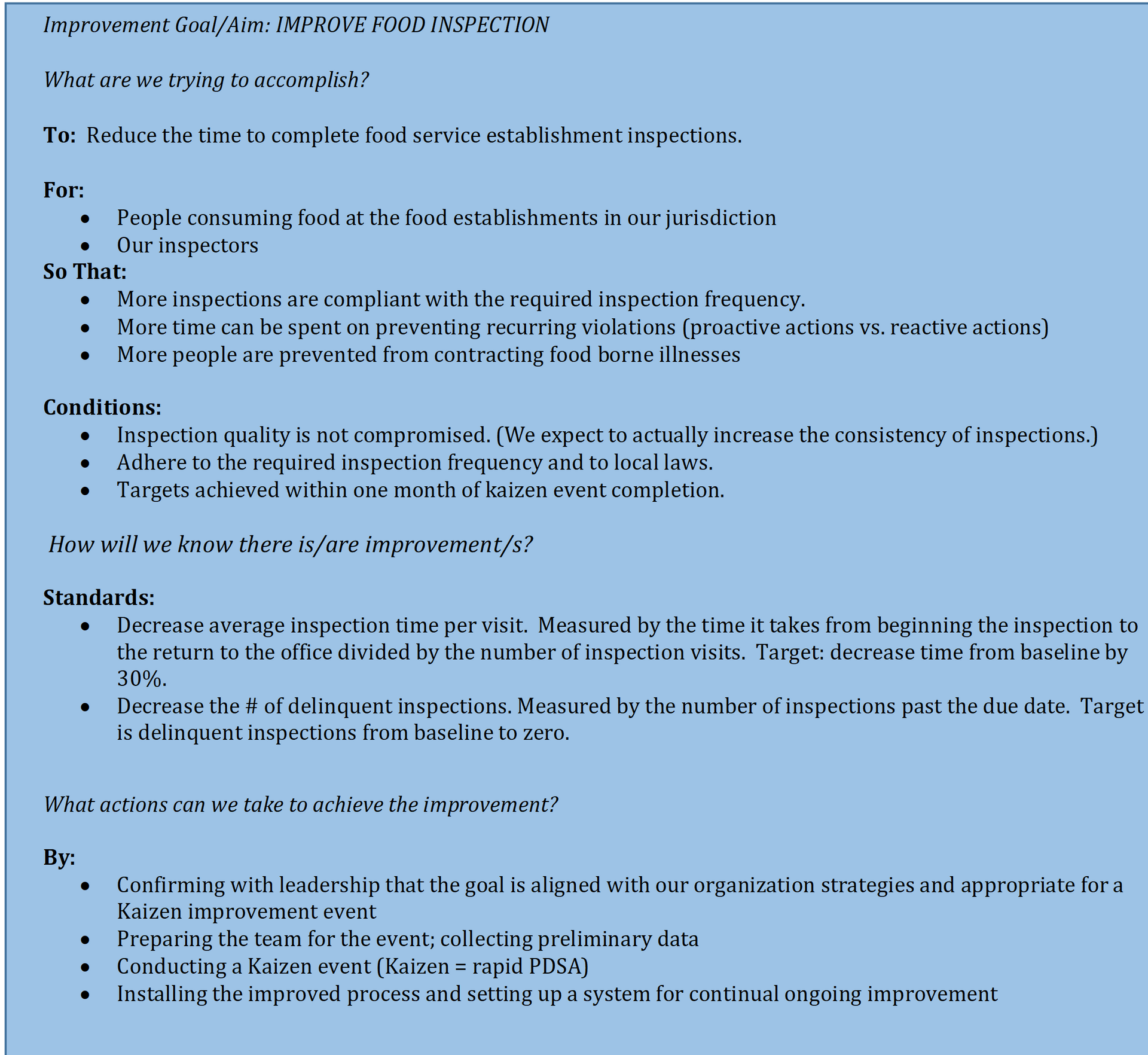
Think about the goal/Aim statements created. Do they address all of the items covered in the example? Take advantage of learning from others? What will you improve for the next one?
How to Create a Goal/Aim Statement?
Getting Ready Tasks:
It often helps to first understand what prompted the opportunity. How is this goal linked to the organization strategy or a larger goal? If it is not clear that this linkage exists, then exercise caution before starting the goal statement because it may indicate that there is not support for the effort or it may not directly align with the larger purpose.
It also helps to have a simple “picture” of the gap between the current state of the area you are addressing and what we want it to look like in the future. Think of it as understanding where we are now (current state), where we want to ultimately go (Vision) and which part of the gap the goal is addressing (Target state). There could be many improvements along the path to the Vision and it is important to know how big a step the goal represents along the path.
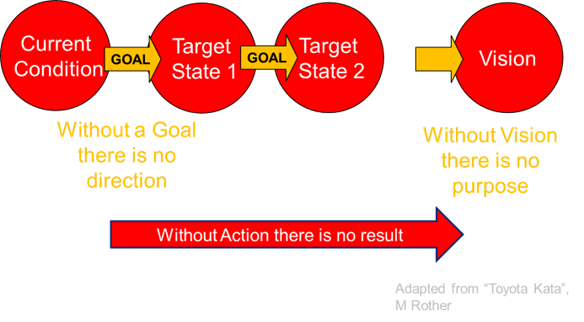
Describing the gap can often be done by describing in simple terms how the current process or opportunity appears to key stakeholders today and then describing how we want it to look like after the improvement activity. Note this is not a list of solutions or things to do; it is simply a “picture” of the difference between the before and after improvement.

Doing Tasks:
Draft the goal statement (six components) using the above guidance and attached template. Once drafted, test the goal statement:
- Goal statements for an improvement project state the problem we're addressing in the TO section. The BY section includes the approach to be used (e.g. the improvement process (PDSA) or kaizen) and does not include potential solutions.
- The FOR section contains the direct beneficiaries; make sure accomplishing the goal and achieving benefits (SO THAT) would be acknowledged by the beneficiaries as a benefit
- TIP: Achieving the TO should create the SO THAT; if it does not, STOP and rethink.
- TIP: If the TO and SO THAT have the same content, STOP and rethink- the first creates the second.
- STANDARDS should have what, how and a target; make sure they can be practically measured and used to judge the goal.
- CONDITIONS are limitations, or a must do, not a potential solution. If there are potential solutions to consider, hold onto them until the problem solving phase.
- TIP: Include the time for completion as a STANDARD or a CONDITION.
- TIP:
Make sure that the goal statement is effectively aligned or interlocked with higher level strategies or lower level tactics. (See “Hoshin Kanri” or Hoshin planning; a powerful planning process often used during annual improvement planning to create alignment from strategic objectives to local objections and actions.) The WHAT (TO statement) and HOW (BY statement) of the different levels of goal statements should align. See example below.
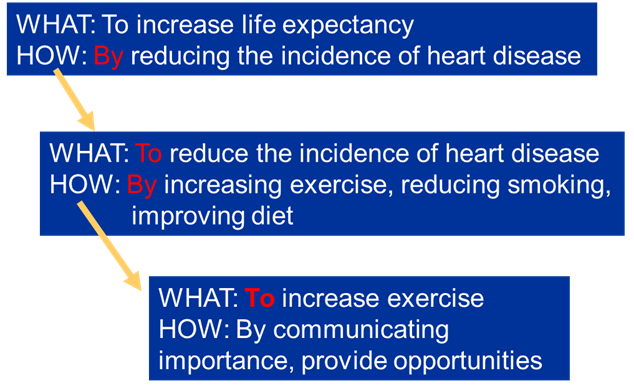
Follow-up Tasks:
Document, communicate and start to use the goal statement during each phase of the improvement process.
- Use the goal for communications to key stakeholders so they understand the project, and can participate effectively.
- Use the goal during mapping and data collection efforts e.g. if the goal is to reduce cycle time, then data collection efforts should include identifying significant locations where the process stops. (make sure data is consistent with goal)
- Use the goal to guide cause and effect analysis and prioritization of issues and solutions; high priority issues and solutions should have a high impact on goal
- Use the measures in the goal statement to guide what to test and how to test the changes.
- Use the TO in the goal statement as the starting point for extracting lessons learned; always close back to the goal when assessing whether the project exceeded, met or under delivered.
- Start with goal statement and results of improvement for setting ongoing performance expectations and new improvement targets
Summary
Goal setting is a key method to help establish focus and increase the probability of success in an improvement project. Comprehensive goals help to align projects with organization strategies, gather support from leadership and engage team members, improve problem solving and communicate with stakeholders. Goal statements can also be powerful in helping to charter teams, make decisions, and run more effective meetings.
Enjoy the focus and happy improving!
